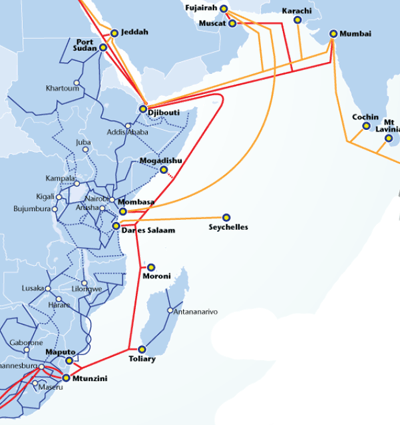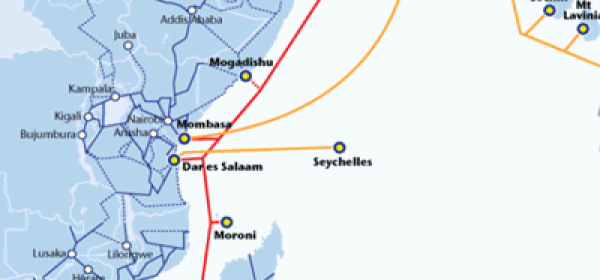Sub-Saharan Africa includes some of the world’s fastest growing economies, and telecoms operators are building networks to cater for rising demand for internet access
Six of the world’s ten fastest-growing economies between 2000 and 2010 were in sub-Saharan Africa — in sharp contrast wish a global environment dominated by faltering economies and an international credit crisis. This number is expected to grow from six to seven by 2015. It is no coincidence that internet usage in Africa has grown rapidly over a similar period.
TO KNOW MORE ABOUT INVESTMENT OPPORTUNITIES IN AFRICA. CONTACT US!
The number of internet users in Africa has risen 30-fold over the last 11 years — up from 4.5 million at the end of 2000 to 140 million by December 2011.
The high costs of PC ownership and limited availability of fixed line infrastructure in Africa have resulted in much of this growth coming from mobile internet. In South Africa, for example, over 90% of broadband internet access is over mobile infrastructure, and the figure is even higher in Kenya.
Historically, service providers in Africa faced a myriad of technical and financial challenges in attempting to deliver affordable, reliable, high-speed internet access. These included limited bandwidth, high costs, poor reliability and little or no access to international submarine cables. As a result, internet access in many countries was extremely expensive and restricted to wealthy consumers and large businesses. However the situation has improved significantly in recent years as the number, capacity, reach and accessibility of submarine and terrestrial cable systems has expanded.
Nine new international submarine cables have landed on the coastline of sub-Saharan Africa since 2009 and tens of thousands of kilometres of new fibre are being laid across the continent each year.
Operators are supplementing national fibre deployments with the rollout of metropolitan area fibre rings in major cities and wireless technologies such as WiMax and wifi to extend local reach.
“We also have access to an unparalleled 50,000 kilometres of terrestrial fibre network footprint in Africa,” says Chris Wood, CEO of WIOCC, a wholesale operator that is owned by 14 telecoms companies in the region. “Our influence is helping to bring down the cost of terrestrial backhaul capacity, which now represents as much as 50-60% of the cost of an international circuit in some markets.”
The improved infrastructure is helping to bring down prices, adds Wood. “In Lesotho, for example, internet service prices have fallen by up to 67% as a result of WIOCC delivering lower-cost internet connectivity to the country.”
Increasing competition for customers in rapidly deregulating markets drives down prices and erodes margins. In many African markets, voice charges and average revenue per user have fallen. In some, data prices per megabyte are coming down, while bandwidth demand continues to grow rapidly. Competition is also making service quality — reflected by speed and performance — an increasingly important factor in customers’ decision-making as price differences become less significant.
All of this creates significant challenge. Against a backdrop of falling prices, operators must find ways to expand their network infrastructure and service offerings to satisfy customers’ ongoing demands.

“We are now doing business in countries such as Namibia, Botswana, Zimbabwe and Lesotho, enabling operators there to provide businesses and consumers with faster, more reliable and significantly more affordable, high-speed international connectivity,” says Wood.
WIOCC has strategic investments in three of the new submarine cables that now serve the African coast, EASSy, WACS and EIG. The company has also bought capacity on other cables that connect Africa to the world, including SAT3, Seacom, SMW3 and TEAMS. “These investments enable WIOCC to offer its customers high levels of network resilience and customised diversity solutions — essential elements in building the high-quality service offerings they need to attract and maintain customers and revenues,” says Wood.
“An ISP’s ability to provide its customers with uninterrupted, high-speed broadband connectivity is an increasingly important competitive factor, strongly correlated with market success,” he adds.
As the markets of sub-Saharan Africa continue to develop, operators will face further competition and fresh challenges to their profitability. The ability to partner now to secure cost-effective access to international internet connectivity for the long term is essential — ensuring that they can not only deliver the improved internet performance, in terms of speed, capacity and reliability, demanded by their customers on an ongoing basis, but also attract new customers and revenue streams by launching more demanding, higher-margin services.
TO KNOW MORE ABOUT INVESTMENT OPPORTUNITIES IN AFRICA. CONTACT US!










